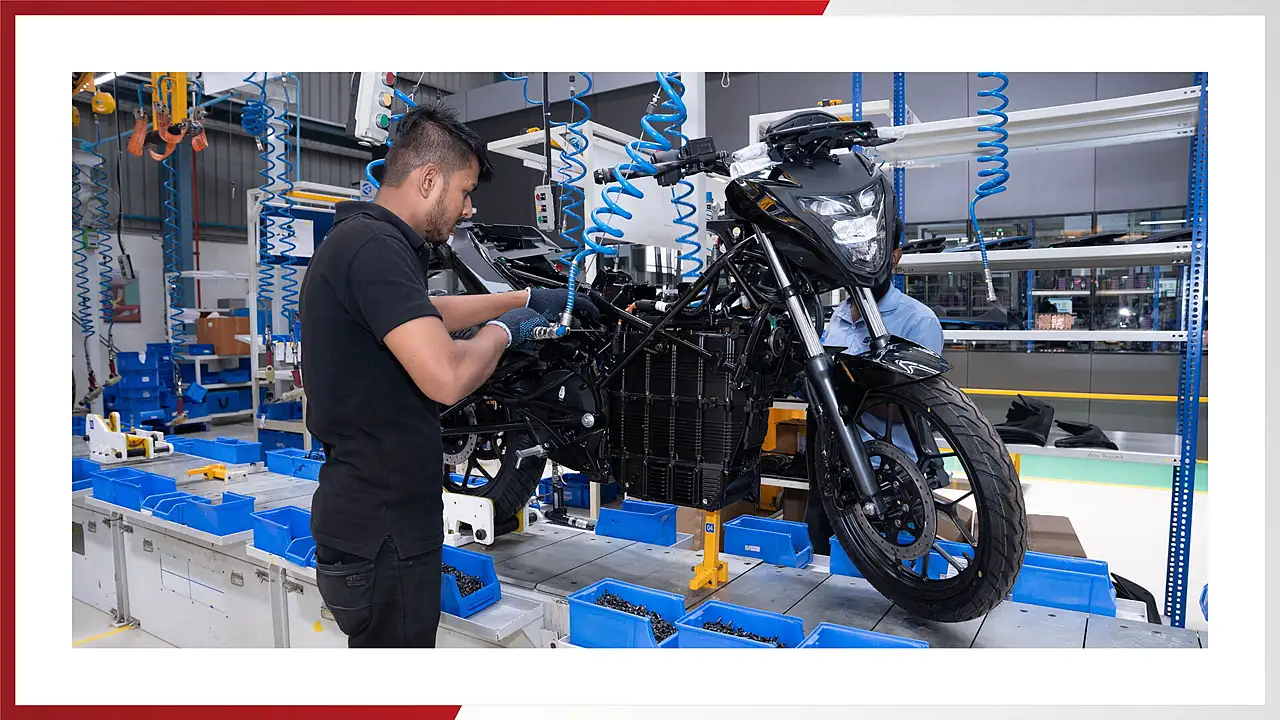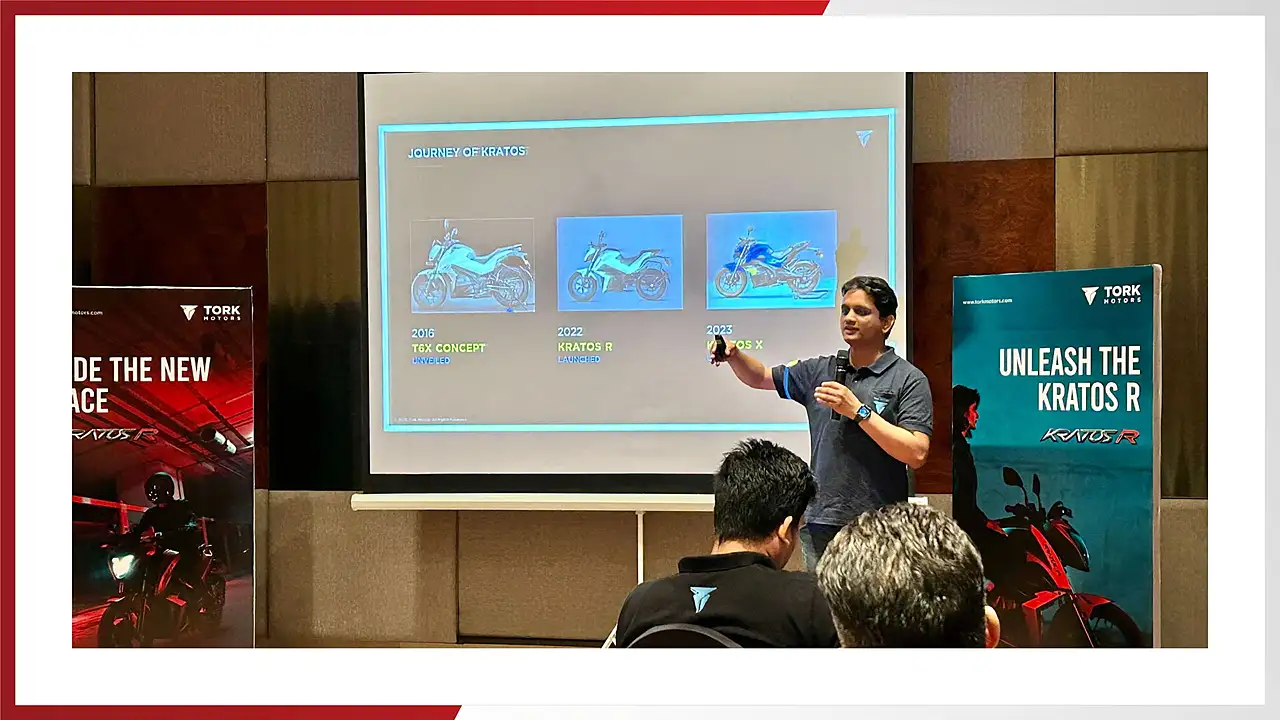
It was at the 2009 Isle of Man TT race when Kapil Shelke finished in third place.
As Founder & CEO of Tork Motors, where Kalyani Powertrain has 60% stake, he is keen to replicate this racing DNA in his electric motorcycles. Rewind a bit to the 2016 Auto Expo when Tork’s 6X concept, now christened Kratos, was showcased at the event and had clearly embedded the race learnings at the Isle of Man TT seven years earlier.
Back then when Tork was working on race machines, the TTXGP improved its performance from 156 kmph in 2009 to 210 kmph the following year and further to 240 kmph in 2012. However, in the case of electric, road use is less about motor performance and more on battery and range.
The battery pack, its fitment and motor placement are the USPs of Kratos R. Once Tork accumulated data available from racing, the next step was to scale up the range and optimise motor performance. The 9kW 38Nm coreless axial flux motor that can spin at 5300rpm took six years to develop.
The motor has a central axle mounted fan that sucks in air and blows on the top of the motor for optimising and increasing safety of the motor. Every 9.5 kg motor is tested for peak power and continuous power for 30 minutes to make it safe for placement in the motorcycle. The data is then compared to previous calibration reports where each motor must be in sync with those numbers, else more analysis is done to ensure compliance.

The 9kW motor can also be used in three-wheelers made by other OEMs and can also be scaled down for scooter applications. “We have intentionally chosen not to supply this motor to other two-wheeler EV makers but cater to needs of three-wheelers,” says Shelke. When integrated with the vehicle, axial flux motors are efficient but when looked at part by part, they are 10-15% more expensive than brushless direct current motors.
Tork produces its range at its Chakan plant near Pune and daily numbers are around 30 units which could be doubled if the need arises. The entire assembly, right from sorting the cells for the battery pack and packaging it in a lightweight IP67 battery case to testing and fitting is all done by hand.
Kratos R has been positioned as a premium commuter E2W and so designed just not to look distinctive but to “blend in and feel like an intuitive motorcycle that everybody will be comfortable owning”. There was no supply chain worth its name when the Kratos was being developed and the company engineered most components and technology in-house, including the ECU, display, high power connectors and telematics system.
Every component has to go through checks and testing across the three assembly lines for motorcycles, batteries and motors before heading out for final output. The split trellis frame, that prioritises handling, enters the assembly line and the components are assembled by hand till the final product.

The final product goes through dyno testing where all parameters are evaluated under preset standards. The motorcycle then undergoes road testing before it gets signed off for delivery. Kratos R also comes with an optional portable charger that fits in its boot space, making it convenient for riders. Localization content is 94% and the goal is to increase this to 99%.
All component data like the VIN, battery and motor numbers along with other electrical components are combined and recorded on the ECU. The bike’s telematics device has 4G. BLE, GPS enabled IMU that is connected to the IRIS cloud. OTA (over-the-air) updates allow the backend engineers to update the software when it is not in use. This system, built on ATHENA as the backend, can pick up red flags and notify the user of safety concerns.
Tork has 15 dealerships and is targeting 100 touch points by the end of this fiscal. Pune and Bengaluru have been identified as brisk markets with some enquiries coming in from overseas too.
On the Bharat Charge Alliance which involves a common interoperable EV charging network, Shelke says, “ My hope is that you go to any charging station, plug-in and go.” However, progress on this alliance has been slow and Tork will focus on expanding its own charging network.
Also Read